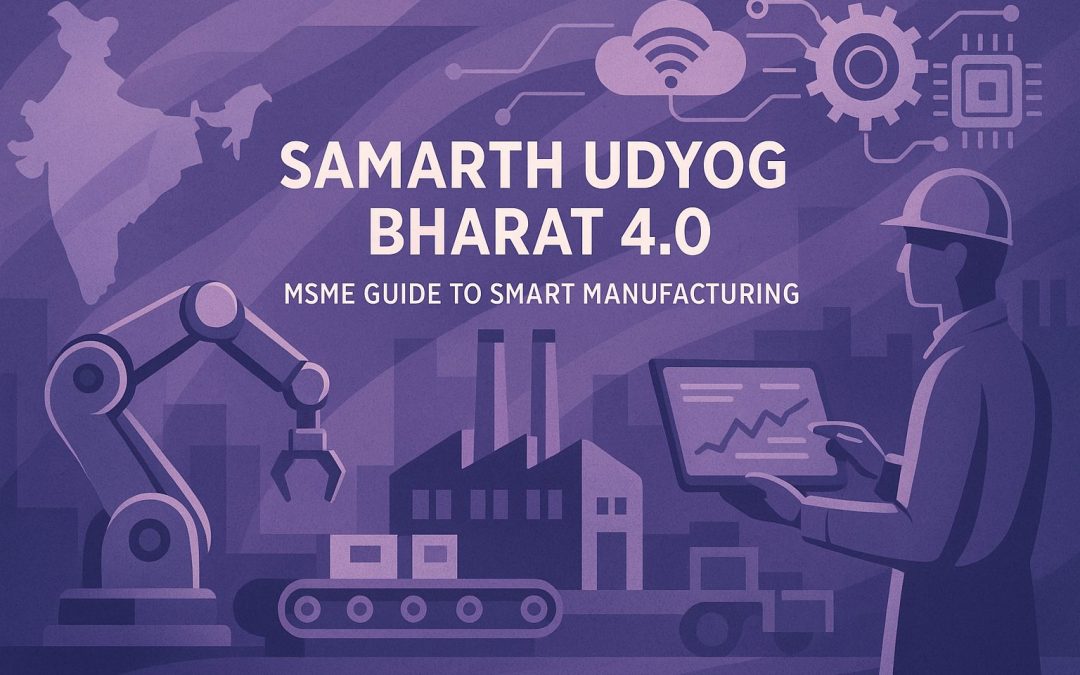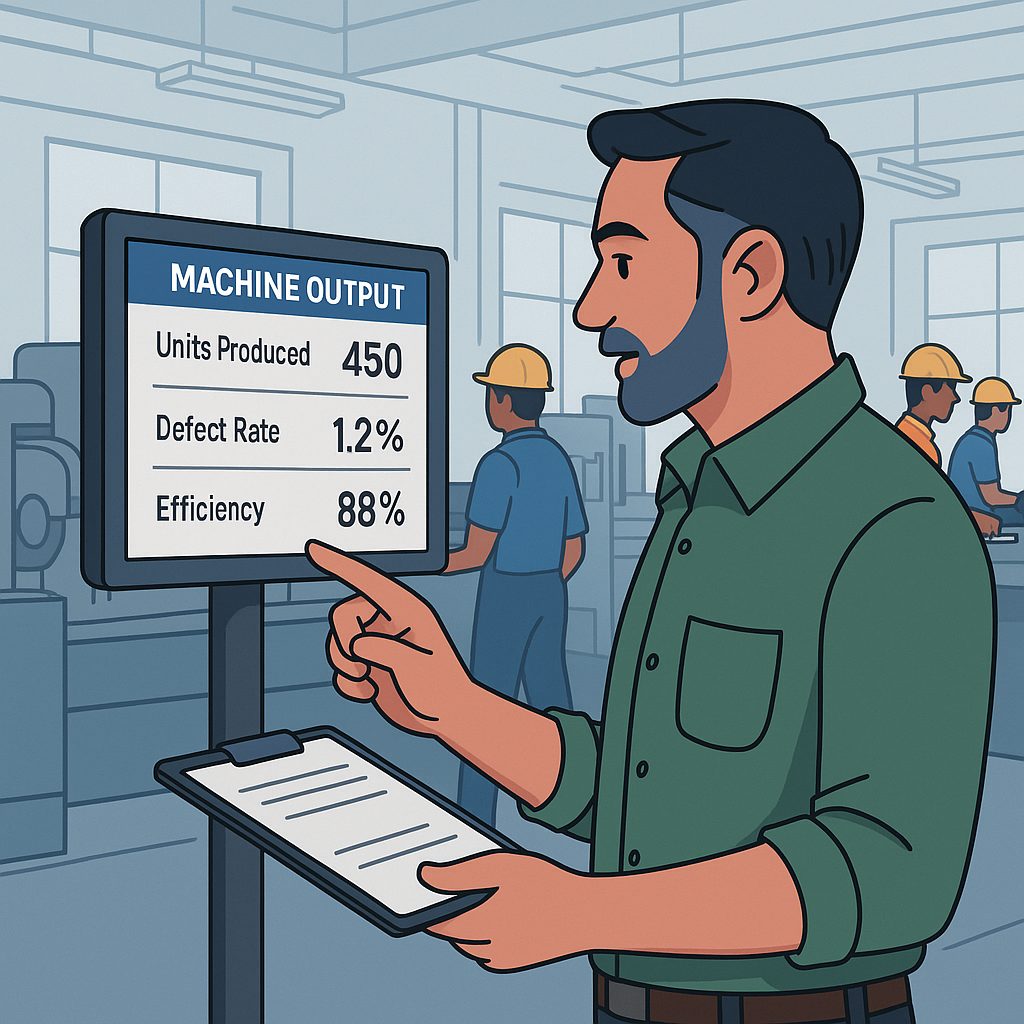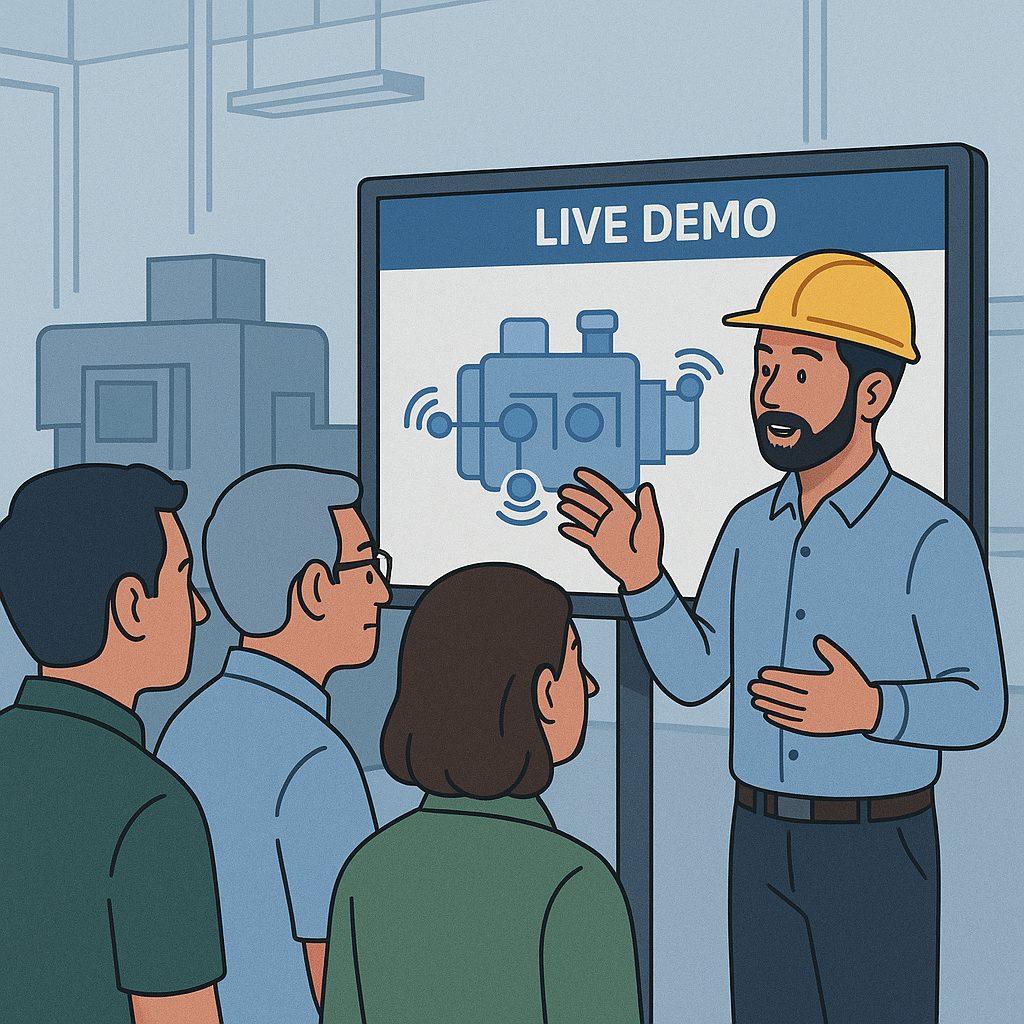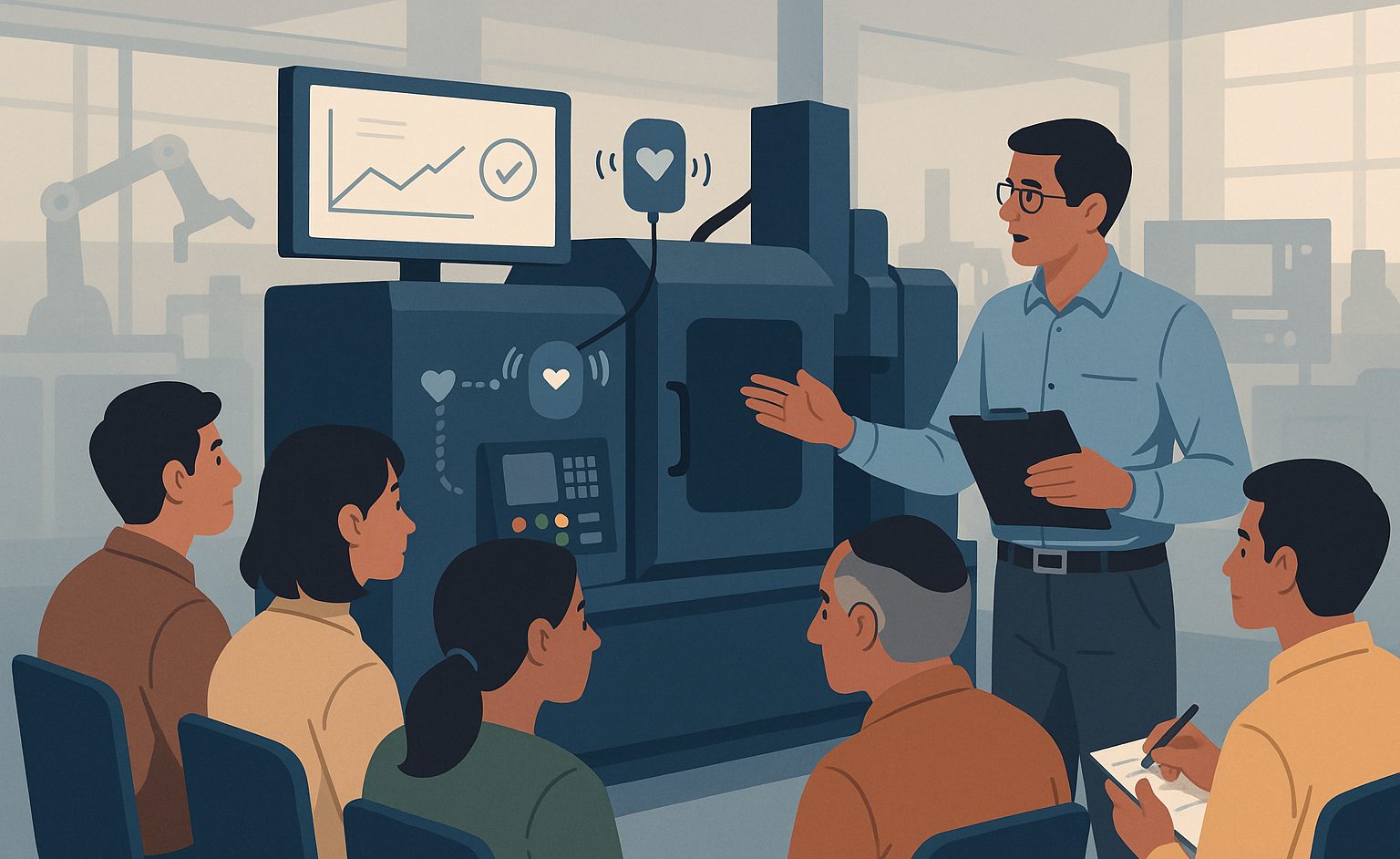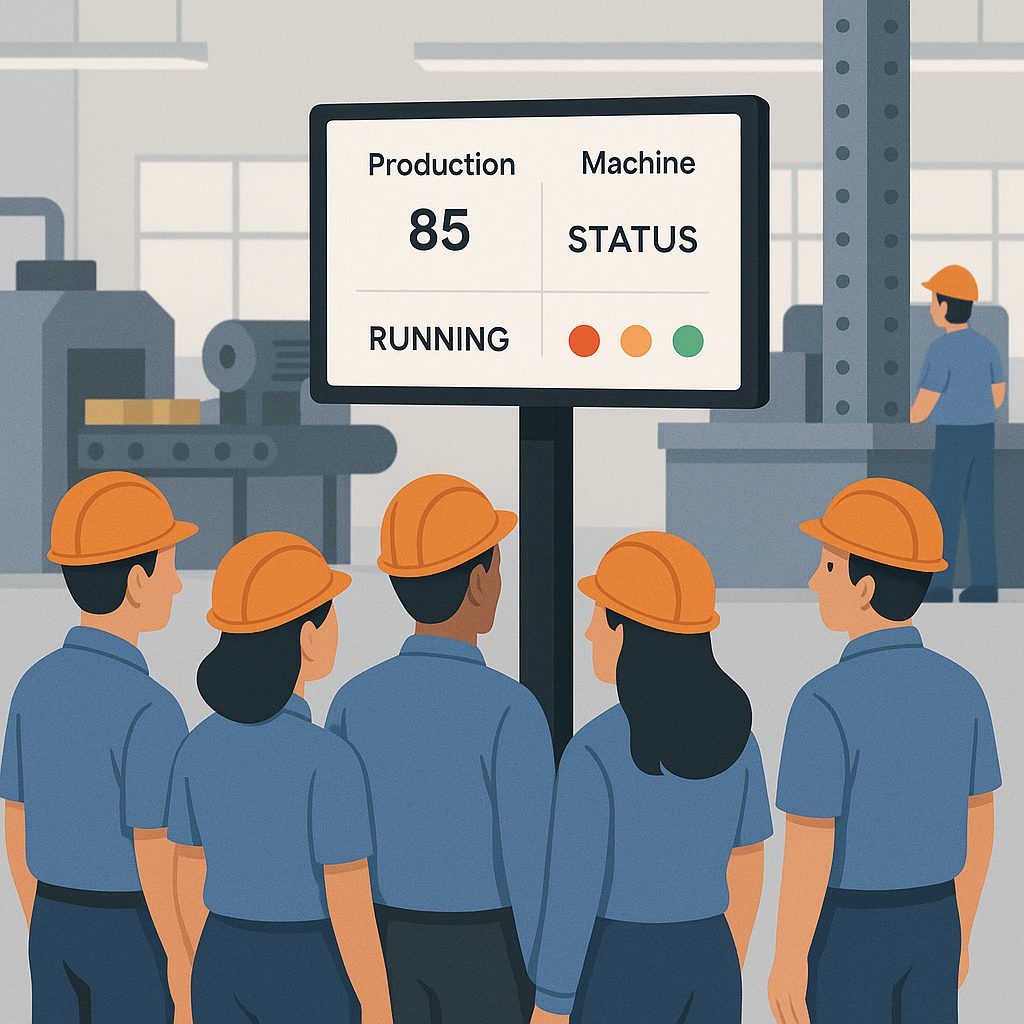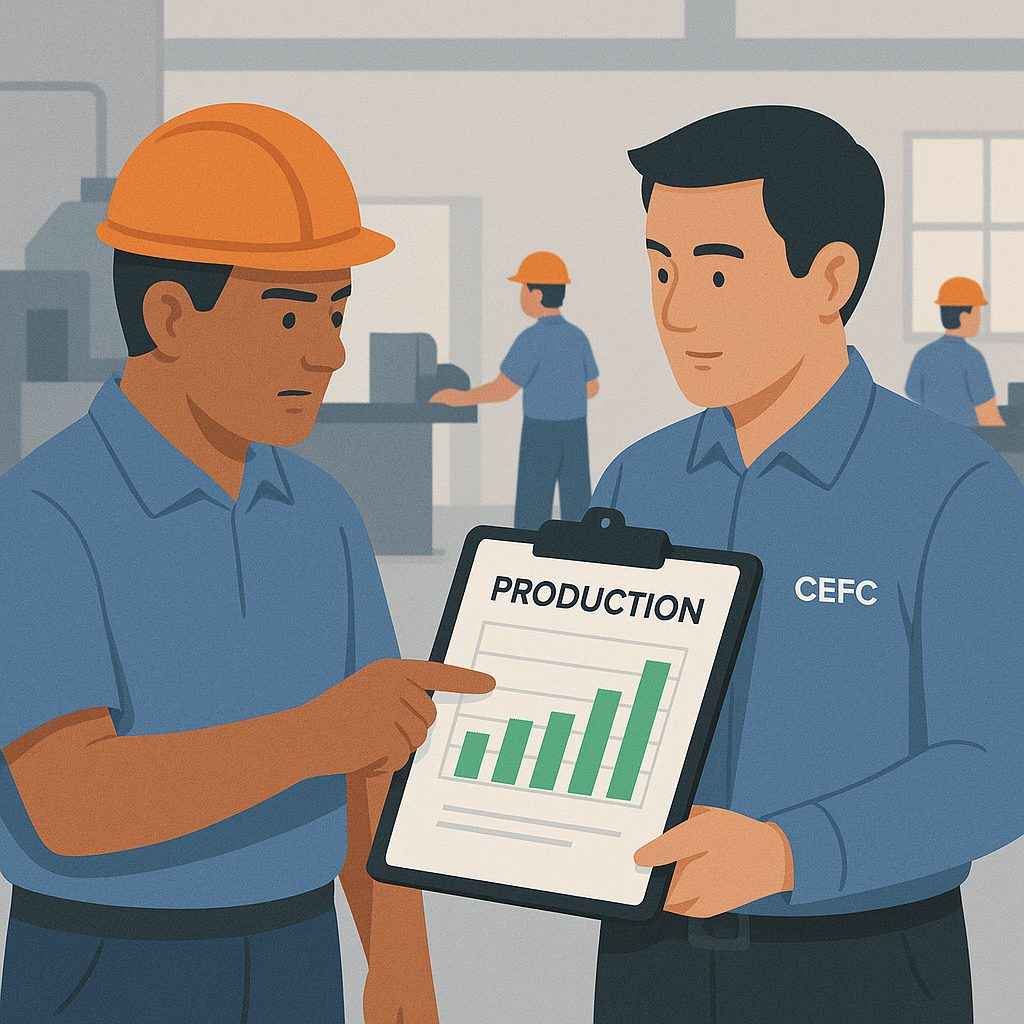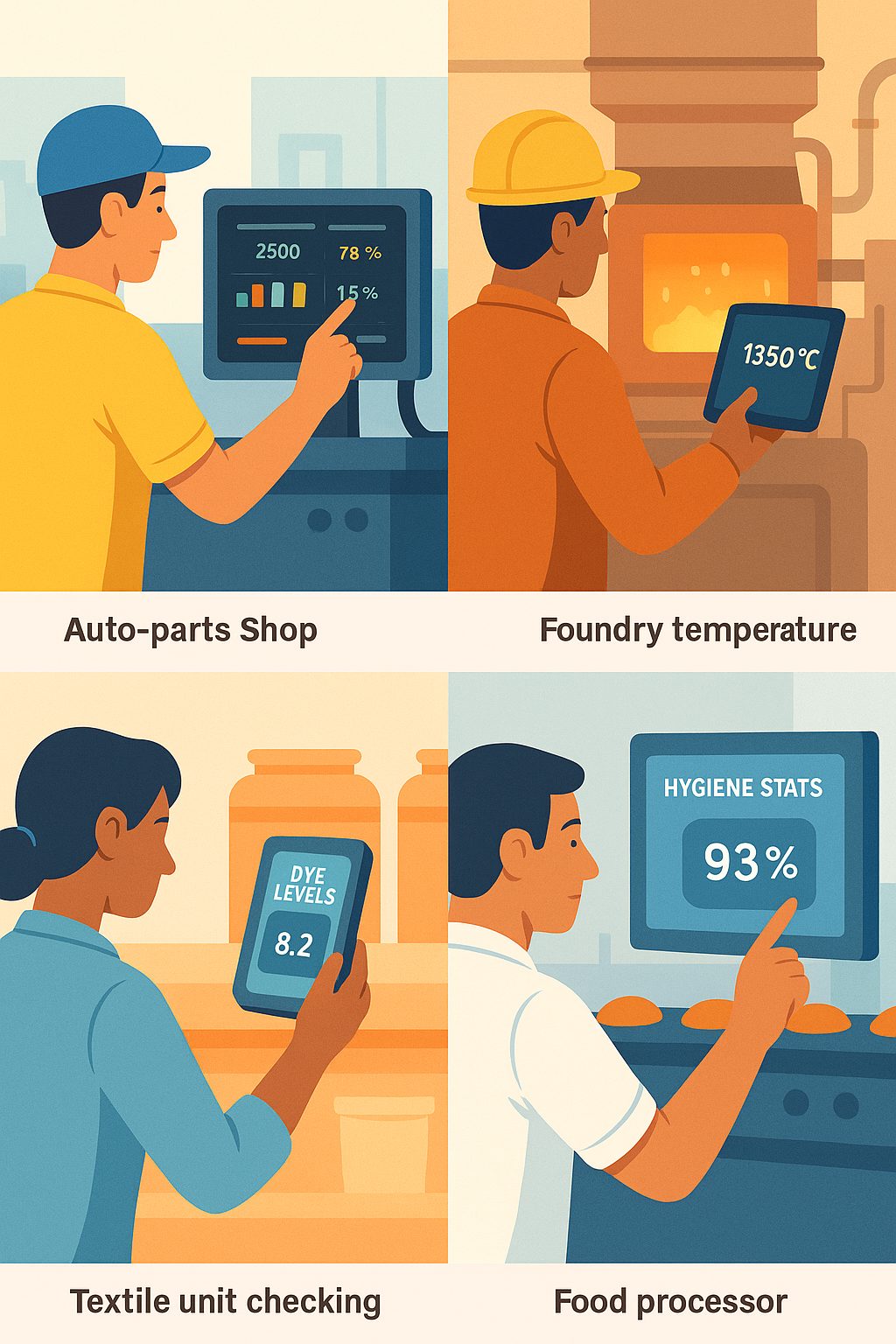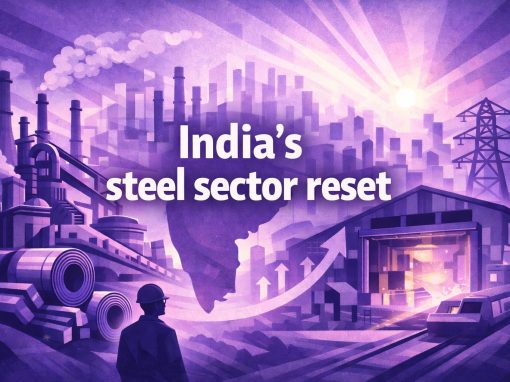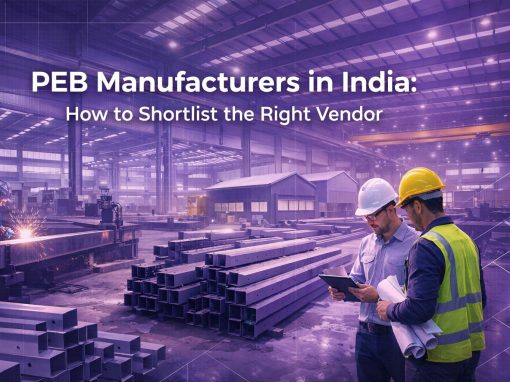Table of Contents
Spend a day inside a small factory in India and you’ll see the reality — machines running beyond their prime, supervisors juggling paper registers, and buyers pressing for quicker, cleaner deliveries. For most owners, the margins are thin and the pressure is constant.
That is why Samarth Udyog Bharat 4.0 was created. It isn’t just another policy note. It’s a push to help MSMEs modernise without feeling lost in technical jargon. The idea is simple: connect smaller units with technology centres and give them a chance to test robotics, sensors, data tools, and digital workflows before making big investments.
Many entrepreneurs still wonder, “Is this for us, or only for the big players?” In practice, even the smallest unit can benefit. A textile workshop in Erode can track dye usage to cut waste. A casting shop in Rajkot can monitor furnaces in real time and save energy. An auto ancillary supplier in Pune can share machine data directly with OEMs to build trust. These small steps often open the door to larger contracts.
Think of the programme as a bridge. On one side are MSMEs dealing with high input costs and outdated setups. On the other side stand global buyers who expect smart factories, digital records, and traceability. Samarth Udyog Bharat 4.0 is the walkway between the two — built so that even the smallest player can cross, one step at a time.
What is Samarth Udyog Bharat 4.0?
The phrase sounds heavy at first. But in simple terms, Samarth Udyog Bharat 4.0 is the government’s way of helping Indian factories — especially small and mid-sized ones — shift into the world of digital manufacturing. It was rolled out by the Ministry of Heavy Industries under the Capital Goods Scheme, and its purpose is plain: give MSMEs access to tools that make them more efficient and more competitive.
Now, what does that mean on the ground? Industry 4.0 is the buzzword. But behind it are very practical things — sensors that tell you when a machine needs maintenance, dashboards that track production in real time, robotic arms that reduce errors, and AI checks that catch defects early. For most MSMEs, buying these outright is too expensive. That’s where Common Engineering Facility Centres (CEFCs) come in.
These centres are not glossy showrooms. They act more like trial grounds. An MSME can walk in, test how automation fits into their process, or see how IoT data could reduce energy wastage. It’s hands-on — the kind of space where you can make mistakes, ask questions, and still walk away with clarity.
Take the C4i4 Lab in Pune. They’ve worked with auto ancillary units to track downtime and predict failures before machines break down. Or the IITD-AIA Foundation in Delhi, where MSME teams can learn directly from engineers about retrofitting existing setups with smart tools. These examples prove the scheme isn’t theory. It’s practical, and it’s being used right now.
The big takeaway? You don’t need to be a large exporter to benefit. Even a foundry with a handful of furnaces or a textile unit running two looms can tap into these centres. The initiative was designed so that smaller businesses can start small, test technology, and then scale when ready.
How MSMEs Can Access the Samarth Udyog Network
The first doubt most business owners raise is simple: “This scheme looks big… but how do we even get in?” The truth is, you don’t need a consultant or a thick file of paperwork to begin. The entry points are fairly straightforward once you know where to look.
The entire programme runs through Common Engineering Facility Centres (CEFCs). These are set up in different parts of the country, each specialising in something specific — robotics in one, digital foundry practices in another, or IoT and AI for general manufacturing. For an MSME, the task is not to figure out every centre but to choose the one most relevant to your sector.
Step one: locate the right centre
If you supply auto parts, the C4i4 Lab in Pune is designed for your kind of work. If you are in general engineering, the IITD-AIA Foundation in Delhi is worth exploring. Foundries can check the CMTI Smart Manufacturing Centre in Bengaluru, while process industries can look at IISc’s initiatives. Matching your line of business with the right hub saves time and confusion.
Step two: reach out
Most centres keep a help desk and publish contact details on their websites. State-level industry associations also connect MSMEs to these facilities. In fact, the easiest way to start is by attending one of their open workshops. No jargon, no big investment — just a half-day session to see what’s on offer.
Step three: begin with something small
Don’t think of replacing your entire production line in one go. Most MSMEs start with a pilot — adding a few IoT sensors to track power use, running a digital energy audit, or testing a simple automation cell. The idea is to learn what works for your factory without putting your business at risk.
Many owners assume this will be a long bureaucratic process. It isn’t. Even a small machine shop or a textile workshop with two looms can walk in, register interest, and begin discussions. Remember — these centres exist because the government wants MSMEs to use them. Their job is to guide, not to push you into a sales pitch.
Benefits and Business Outcomes for MSMEs
Most MSMEs ask the same thing when they hear about Samarth Udyog Bharat 4.0: “This sounds fancy… but how does it help us on the shop floor?” The answer is in the small, everyday wins.
Cutting costs and reducing waste
Smart tools track things we usually overlook — power use, machine idle time, even small leaks in material handling. For a foundry, this could mean fewer bad castings because the furnace is monitored more closely. For a textile unit, less wastage of dye or water. These aren’t big, dramatic changes. They are simple checks that save money month after month.
Keeping machines running
Anyone running a small unit knows one broken machine can throw the whole delivery schedule off. IoT sensors now alert you before a breakdown happens. A press machine showing early signs of wear can be fixed in a day instead of shutting down for a week. That difference keeps orders moving and avoids angry buyers.
Better quality and smoother audits
Large buyers want proof — not promises. With digital dashboards, you can show real data: how many parts produced, how many rejected, and why. For exporters and OEMs, this transparency matters. For MSMEs, it often means moving from being a backup vendor to a preferred one.
Upskilling workers and raising credibility
The scheme isn’t only about machines. The centres also train workers. An operator who learns how to read a dashboard or set up a sensor becomes more valuable. Over time, the unit itself gains a reputation — not as a low-cost supplier, but as a reliable partner. That reputation is hard to buy, but easy to lose if you don’t keep up.
The big picture? Competitiveness. Margins are already thin. Global players are waiting to grab Indian contracts. If an MSME stays with outdated practices, survival gets harder. With Samarth Udyog, you don’t leap overnight, but you take steady steps that keep you in the game.
Challenges MSMEs Face and How to Overcome Them
For many MSMEs, the idea of shifting to smart manufacturing sounds attractive on paper. But once you sit down to plan, the roadblocks show up quickly. Owners often say: “We like the concept, but how do we actually make it work for us?”
High upfront cost and ROI worries
The first barrier is always money. Machines, sensors, and software sound expensive — and most small firms run on tight cash flow. The trick is to avoid a big-bang approach. Start with a pilot: monitor one furnace, one loom, or one press machine. The investment is modest, and the savings or efficiency gains become proof for the next step. Some CEFCs also support shared infrastructure, which cuts the burden further.
Lack of skilled manpower
Even if owners are convinced, workers may hesitate. Operating dashboards or handling IoT data can feel intimidating. This is where the training modules at the CEFCs matter. They are designed for shop-floor teams, not just engineers. Once workers see that these tools actually make their jobs easier — less paperwork, fewer breakdowns — the resistance fades.
Fear of downtime during transition
Small units worry that shifting to digital systems will halt production. In reality, most upgrades are phased. A sensor can be installed without shutting down the whole line. A digital energy audit can run alongside normal operations. The aim is not disruption but gradual improvement.
Cybersecurity and vendor lock-in concerns
Owners sometimes ask: “What if my data leaks?” or “What if I get stuck with one vendor forever?” These are valid fears. The answer is to build basic protocols — password hygiene, secure access — and to demand interoperability from technology providers. It’s not about buying the flashiest system, but choosing tools that connect easily with what you already use.
Every challenge looks bigger before you start. Once the first pilot runs and you see a small but clear benefit — lower power bills, fewer rejects, smoother audits — the hesitation gives way to confidence. The important part is to begin, however small the step.
Sector-Specific Opportunities Under Samarth Udyog Bharat 4.0
Every sector faces its own headaches. The strength of Samarth Udyog Bharat 4.0 is that it doesn’t force one playbook on everyone. The centres look at what each industry actually needs and then help MSMEs test the right tools.
Auto & Ancillaries
Auto suppliers live under constant pressure from OEMs — one delay or a rejected batch, and the contract can slip away. For a small shop making brackets or gears, the margin of error is tiny. At the Pune CEFC, some ancillary units started with predictive maintenance on their presses. It wasn’t a full overhaul, just simple alerts before breakdowns. The result: fewer line stoppages and a stronger reputation with OEMs.
Foundries & Heavy Engineering
Ask any foundry owner — energy costs eat into profits faster than anything else. Furnaces are hard to control, and one wrong pour means wasted metal. CEFCs working with foundries have shown how basic sensors can stabilise temperatures and cut rejects. In heavy engineering, digital modelling trims the number of trial runs. Less scrap, less wasted time, more confidence in final output.
Textiles & Garments
In Tiruppur or Surat, the common complaint is always the same: wastage in dyeing and finishing. Industry 4.0 here doesn’t mean robots on the floor — it means small IoT meters tracking water and dye use in real time. Units that adopted this reported not only cost savings but also an easier time passing compliance checks for export buyers. Global orders now often ask for proof of sustainability, and these digital logs provide exactly that.
Food Processing
Food processors live and die by consistency. Temperature, hygiene, and shelf-life are non-negotiable. A small packaged snack unit that installed digital dashboards could instantly show inspectors their hygiene data — no scrambling for paper records. That meant faster certifications and better access to modern retail contracts. For exporters, it’s even more critical: without traceability, doors stay shut.
The bottom line is simple: every sector has a different doorway into smart manufacturing. Auto players start with uptime, foundries with energy, textiles with waste reduction, food processors with hygiene tracking. The trick for MSMEs is not to chase every shiny tool but to begin with the pain point that hurts the most — and test solutions at a CEFC before scaling.
Conclusion
For most MSMEs, “smart manufacturing” feels like a mountain. The costs, the new tech, the training — it all sounds heavy. But Samarth Udyog Bharat 4.0 was never meant only for the big factories. It exists so smaller units can take one step at a time, without burning cash or shutting shop.
Here’s the plain truth. Don’t try to do everything. Start where it hurts most. If power bills are eating your margins, track energy. Machines keep failing? Run a simple predictive check. If buyers ask for quality data, set up a basic dashboard. One problem, one pilot. That’s enough to begin.
When you’re ready, reach out to a CEFC. Attend a workshop, walk through their demo line, talk to the engineers. It isn’t paperwork-heavy. It’s designed to be approachable. Once you see how things work in practice, you’ll know what makes sense for your shop floor.
And remember: the first project doesn’t have to be big. One loom, one furnace, one press machine. Train your workers while you test. Prove the savings. Then, and only then, take the next step.
The gap between old practices and global buyers is widening. Standing still is not an option. With Samarth Udyog Bharat 4.0, MSMEs don’t need to sprint across — they just need to keep walking. Each small step builds confidence, lowers risk, and makes sure your unit stays in the game.
Empowering MSMEs to grow smarter
Tata nexarc delivers powerful solutions for MSMEs—discover tenders, logistics solutions, and streamline procurement. Everything your business needs, all in one place.
FAQs
Is there a cost for MSMEs to access CEFC services under Samarth Udyog Bharat 4.0?
Which government ministry directly oversees Samarth Udyog Bharat 4.0?
Can service-sector MSMEs (like IT-enabled services) benefit from this scheme, or is it only for manufacturing?
Are there financing or subsidy options available for MSMEs adopting Industry 4.0 under this initiative?
What certifications or credentials do MSMEs receive after participating in CEFC training programmes?
How does Samarth Udyog Bharat 4.0 align with other MSME schemes like Credit Linked Capital Subsidy or Udyam Registration?
What kind of technical support is provided if an MSME faces implementation issues after a pilot project?
Are there state-level variations or additional support linked to Samarth Udyog centres?
Can MSMEs collaborate as clusters to share infrastructure and training costs under this programme?
How does Samarth Udyog Bharat 4.0 help MSMEs with compliance for export markets (traceability, sustainability, quality certifications)?
Ananya Mittal blends a background in data science with a passion for writing, contributing to Tata Nexarc’s efforts in creating insightful, data-informed content for MSMEs. Her work focuses on exploring sector-specific challenges and opportunities across procurement, logistics, and business strategy. She is also involved in leveraging analytics to strengthen content performance and deliver actionable insights to India's growing B2B ecosystem.
